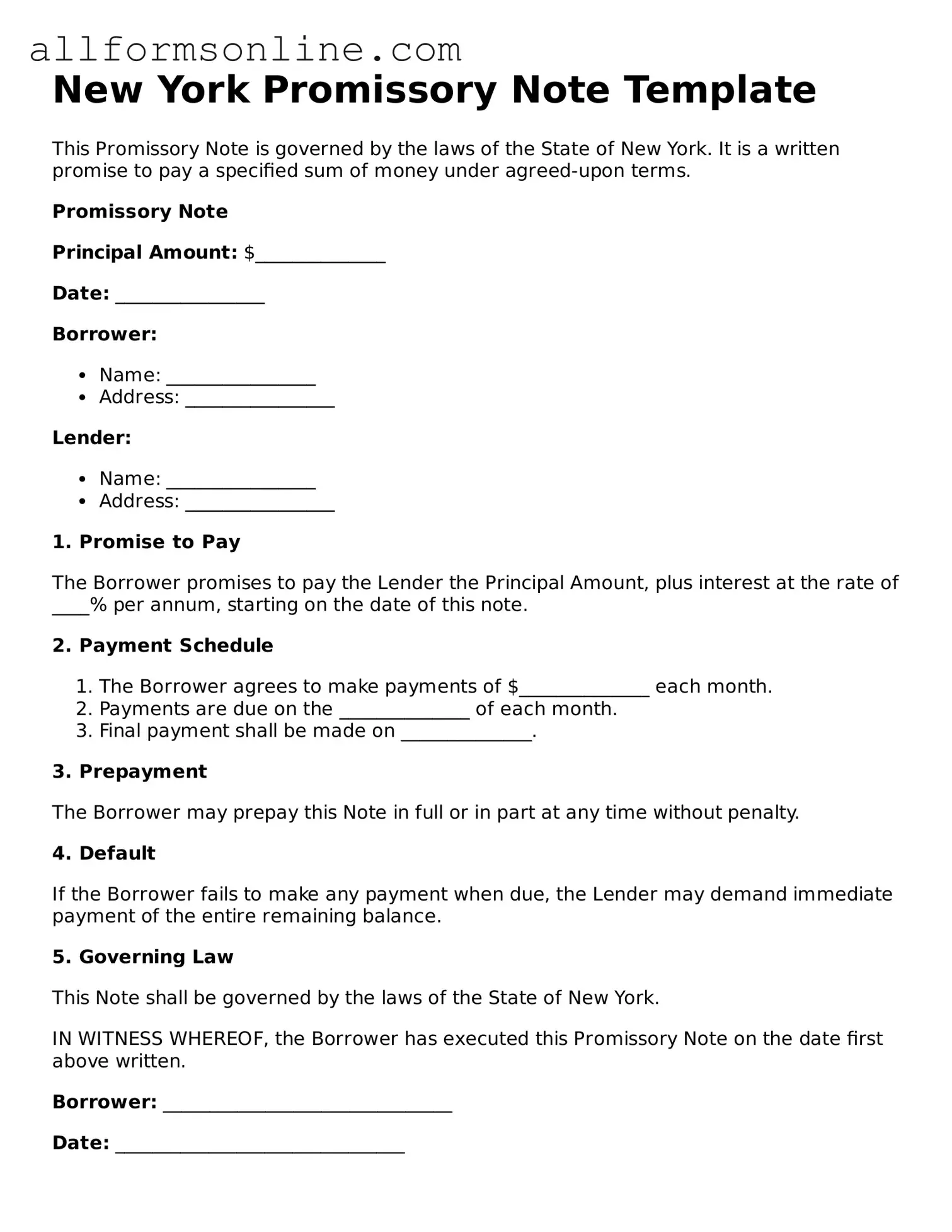Attorney-Approved Promissory Note Form for New York
A New York Promissory Note is a written promise to pay a specified amount of money to a designated person or entity at a future date. This legal document outlines the terms of the loan, including the interest rate and repayment schedule. Understanding how to properly fill out this form is crucial for both lenders and borrowers.
To get started, fill out the form by clicking the button below.
Fill Out Your Form Now
